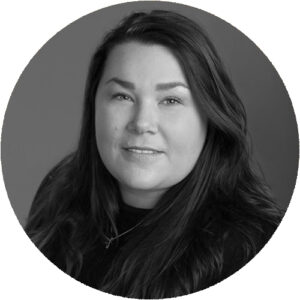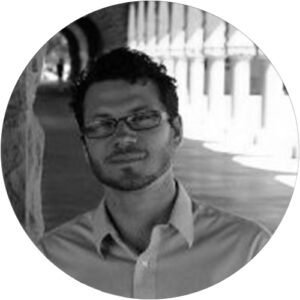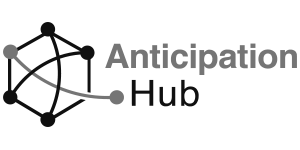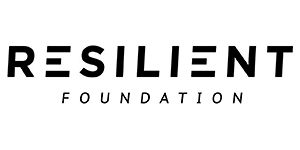FAQ
If you do not find you question here, please contact us at info@averteddisasteraward.org
WHAT JUDGES ARE LOOKING FOR
The Averted Disaster Award will be decided by a panel of judges selected by leaders of the Understanding Risk community. The panel will consist of thought leaders and practitioners in disaster risk management from a broad range of backgrounds. The panel will consider all case summaries submitted by the deadline, and choose the one that makes the best case for an effective disaster mitigation intervention.
Judging Criteria
Judges will assess each application against the following criteria:
- Level of Impact of the Disaster Averted
- Quality of Evidence Based Results
- Potential to Replicate Adapt and Scale
- Levels of Inclusivity, Equity and Focus on the Most Vulnerable
- Narrative Clarity and Contribution to Understanding Risk and Risk Mitigation
What types of disaster mitigation interventions can be submitted for the award?
Interventions take many forms. The most obvious interventions are structural in nature, such as sea-walls or reinforced bridges. Certain activities, such as controlled forest burns, count as interventions too, since they reduce future wildfire risk. Financial products that manage disaster risk, such as flood insurance schemes, count as interventions as well. Interventions can also occur at the individual or community scale, where, for example, placing sandbags to protect critical locations such as grocery stores or hospitals can ensure that the community as a whole can recover more quickly from flash floods. It is important to keep in mind that interventions are proactive and not reactive: interventions are generally pre-meditated and implemented before the disaster occurs.
Who can submit to the Averted Disaster Award?
Any individual, project team, or organization interested in recognizing a successful disaster mitigation intervention can submit a nomination for a particular intervention, irrespective of whether they have a personal connection to the intervention.
What exactly should I write in the case summary?
We expect a maximum 5-page summary, single-spaced, 12-size font, that makes the case for why and how a particular intervention was successful at mitigating a potential disaster. While we do not impose a structure on the case summary, we provide the following suggestions for making such a case:
- Consider counterfactual scenarios where there is no intervention, and imagine the impacts of potential hazards in such counterfactual scenarios.
- If possible, point to evidence, in the form of previous hazard records, datasets, or newspaper articles, that support the above counterfactual analysis.
- Lay out potential future benefits of the intervention, where climate change may intensify certain hazards.
- Highlight the key lessons learned that should be shared.
What will the winning submission receive?
The winning submission will receive travel, accommodations and complimentary ticket for one person to attend the Understanding Risk 2024 in Tokyo Japan where the winning intervention will be featured as part of a session during the event.
What will ADA do with the winning submission(s)?
A documentary short film will be developed to showcase the intervention from the winning submission. The documentary will highlight the impact of the intervention and best practices for implementing such interventions in other regions. The goal of the documentary is to reward and publicize good intervention practices.
The winning nomination will also be featured during a session at the Understanding Risk forum, spotlighted in the Understanding Risk Community newsletter that reaches 13,000 members and included on the Averted Disaster Award website.
All shortlisted nominations will be highlighted.
When will the ADA winner be announced?
The 2024 Averted Disaster Award winner will be announced at Understanding Risk 2024 in Tokyo, Japan.
Can I partner with the Averted Disaster Award?
Certainly! If you or your organization is interested in partnering with the Averted Disaster Award, please contact Carrie at info@averteddisasteraward.org
Selection committee
The Averted Disaster Award Selection Committee is comprised of thought leaders and practitioners in the field of Disaster Risk Management (DRM). Selection Committee members apply their expertise without bias to review applications and collaborate to determine the shortlist of finalists and winner of the ADA prize.

Shanna N. Mcclain, PHD
NASA, Disasters Program Manager
Dr. Shanna N. McClain is the Disasters Program Manager for NASA’s Earth Sciences/Applied Sciences Program. In this role, she leads a dynamic team across NASA centers on issues relating to enhancing and integrating Earth science capabilities for supporting disaster response, reducing disaster risk, and building resilience. She helps define NASA’s role in resilience through the development of EO-focused approaches in fragile and crisis-affected areas, and identifying strategic and non-traditional partnerships that can improve linkages between science and policy. Shanna also serves as Manager of the Earth Sciences Division’s Global Partnerships and Program Coordinator to the NASA Applied Sciences Valuables Consortium. Here, her work involves creating thriving private-sector engagements that bring NASA capabilities to global communities and amplifying the societal and economic benefits of Earth science information.

David Lallemant. PHD
Head of Disaster Analytics for Society Lab (DASL) at Nanyang Technological University and the Earth Observatory of Singapore
David’s work is the basis for the Averted Disaster Award. “Shedding light on avoided disasters : measuring the invisible benefits of disaster risk management using probabilistic counterfactual analysis” will be featured as a contributing paper in the upcoming UNDRR Global Assessment Report 2022. His research focuses on probabilistic risk and resilience analysis of cities, communicating uncertainties in disaster risk, and the uses and limitations of machine learning in disaster risk analysis. David holds a PhD from Stanford University (2015), a MSc from UC Berkeley (2010) and a BSc from MIT (2007). He is a recipient of the National Research Foundation Fellowship, and the Collaborative Data Innovation for Sustainable Development Fund. He is the co-founder of the Stanford Urban Resilience Initiative at Stanford University, and the Co-Risk Labs cooperative.

Stéphane Hallegatte
Senior Climate Change Adviser at World Bank
Stéphane Hallegatte is a Senior Climate Change Adviser at the World Bank. He joined the World Bank in 2012 after 10 years of academic research in environmental economics and climate science for Météo-France, the Centre International de Recherche sur l’Environnement et le Développement, and Stanford University. His research interests include the economics of natural disasters and risk management, climate change adaptation, urban policy and economics, climate change mitigation, and green growth.

Dr. Olivia Jensen
Lead Scientist, LRF Institute for the Public Understanding of Risk, National University of Singapore
Olivia is a social scientist specialising in water and environmental policy with a focus on urban Asia. She joined the National University of Singapore in 2014 and was appointed Lead Scientist at the Institute for the Public Understanding of Risk in 2019, overseeing the Institute’s work on Environment and Climate.
Olivia’s research is concerned with the spectrum of urban environmental risks and the design and evaluation of policy interventions to strengthen the resilience of urban communities. Her current projects address water security in Asian cities; the role of citizen science in assessing and managing environmental risks; and stakeholder engagement in areas with high coastal flood risks.
Partners











